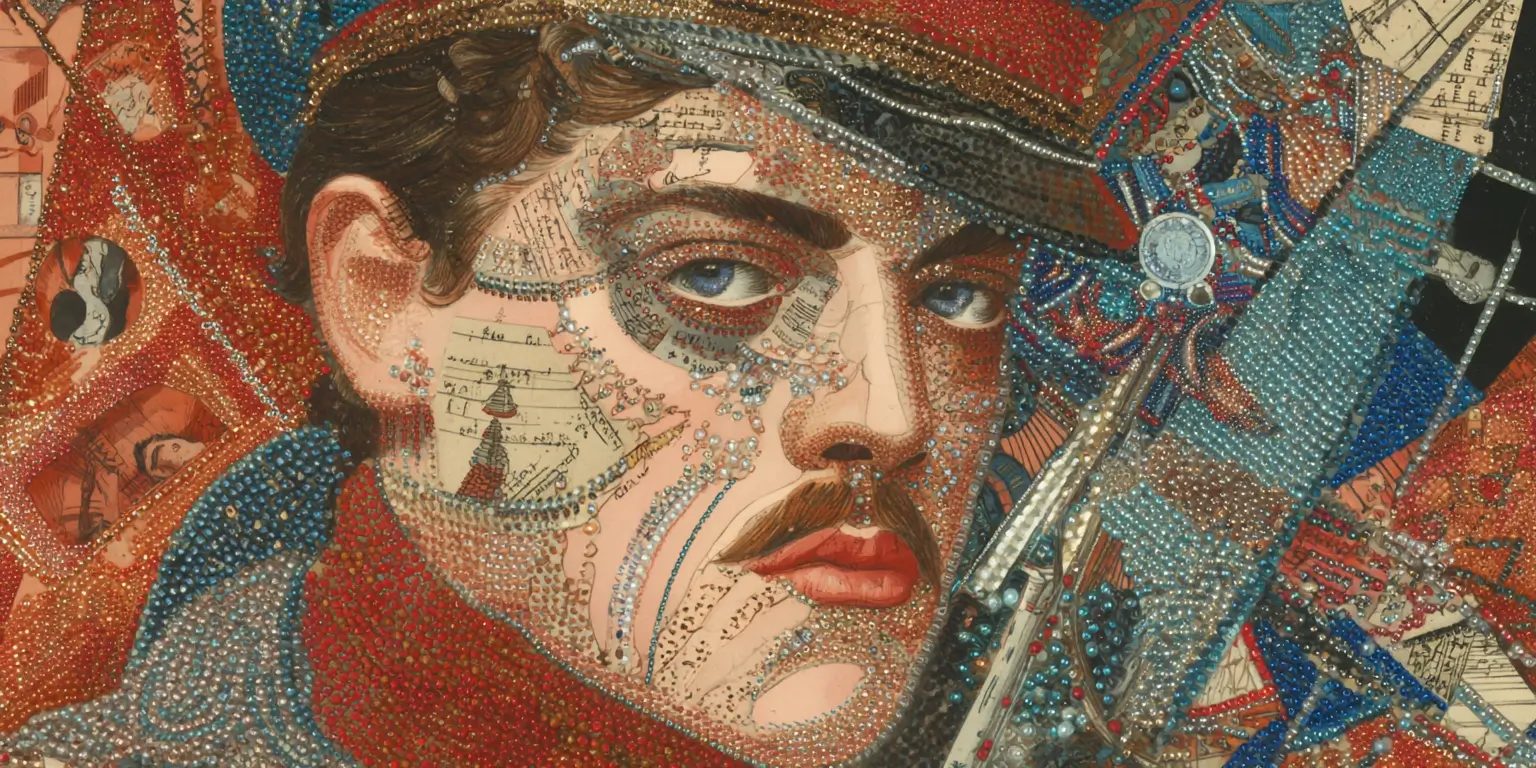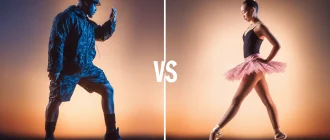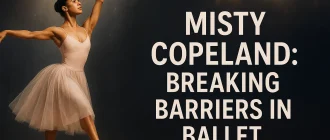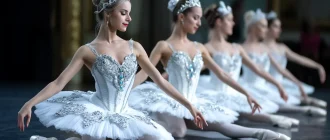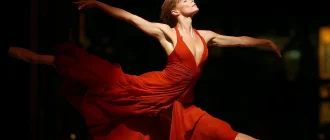Serge Diaghilev, a Russian impresario, founded the groundbreaking Ballets Russes. Through innovative collaborations and visionary productions, he reshaped modern ballet. This article examines his early life, the founding of the Ballets Russes, his influential partnerships, and the lasting cultural impact of his work.
Key Takeaways
- Sergei Diaghilev founded Diaghilev’s Ballets Russes in 1909. They revolutionized ballet with innovative productions emphasizing artistic collaboration and modern dance interpretations.
- The Ballets Russes’ collaborations with prominent artists and composers, such as Picasso and Stravinsky, set new standards in visual design and music, greatly influencing the evolution of ballet as an art form.
- Diaghilev’s legacy endures through his impact on modern ballet, his introduction of Russian cultural themes, and his establishment of a holistic approach to performance that continues to inspire contemporary artists.
Sergei Diaghilev Podcast
Sergei Diaghilev: Early Life and Education
Sergei Diaghilev was born in 1872 in the Russian Empire into a family steeped in artistic influences. His mother was a musician, and his father was a landowner, providing a culturally rich environment that nurtured his early appreciation for the arts. Growing up in a military community in Novgorod, Diaghilev’s artistic stepmother played a pivotal role in introducing him to music and the broader world of the arts.
Although Diaghilev initially pursued a law degree, his passion for the arts remained strong. He also studied music, but his ambitions were curtailed after being told he lacked talent. This setback, however, did not deter him; instead, it redirected his focus towards the broader spectrum of artistic expression.
These early experiences set the stage for Diaghilev’s future contributions to art and ballet. His exposure to various artistic disciplines and a culturally rich upbringing would later be evident in the innovative productions of the Ballets Russes.
Founding of the Ballets Russes
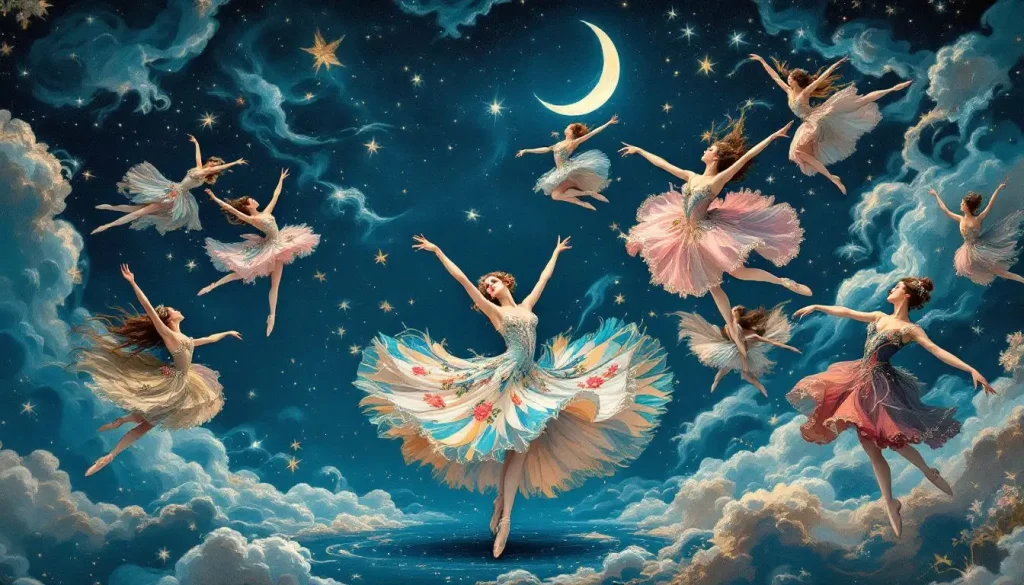
The Ballets Russes was officially inaugurated in Paris on May 19, 1909, marking the beginning of May 19. Diaghilev organized the Ballets Russes with a vision to create fresh, innovative ballets each season, steering away from the repetitive nature of classical ballet. This bold approach quickly captivated European audiences despite initial financial challenges, and by the first season in 1911, the Ballets Russes had evolved into a year-round touring entity.
Diaghilev’s time with the Imperial Theaters greatly influenced his artistic direction. His ambitious production of Léo Delibes’ ballet Sylvia, though leading to his dismissal for its unconventional choices, highlighted his commitment to pushing creative boundaries. This determination became a hallmark of Diaghilev and the Ballets Russes.
The Ballets Russes showcased Russian culture and embraced modern artistic expressions, creating a unique blend that captivated a wide audience. Diaghilev’s Ballets Russes efforts in bringing Russian culture to the forefront of European art were instrumental in establishing the Ballets Russes as a pioneering force in the world of ballet.
Collaborations with Artists and Composers
A defining characteristic of the Ballets Russes was its groundbreaking collaborations with prominent visual artists and composers. Diaghilev’s skill in integrating various art forms into ballet productions set a new standard in the performing arts. Notably, Pablo Picasso’s Cubist designs for ballets like ‘Parade’ and ‘Pulcinella’ added a striking visual dimension that complemented the innovative choreography.
Léon Bakst, another key figure in Diaghilev’s circle, was renowned for his luxurious costume and set designs, which became synonymous with the Ballets Russes’ aesthetic. Bakst’s intricate details and vibrant colors often enhanced the overall impact of the costumes during performances.
Nicholas Roerich’s contributions were equally significant, particularly his costume design and stage designs for Le Sacre du Printemps, which drew upon ancient Slavic traditions and folk art. These collaborations elevated the Ballets Russes’ visual and musical style, showcasing Diaghilev’s visionary approach to integrating the performing and visual arts.
Revolutionary Ballet Productions
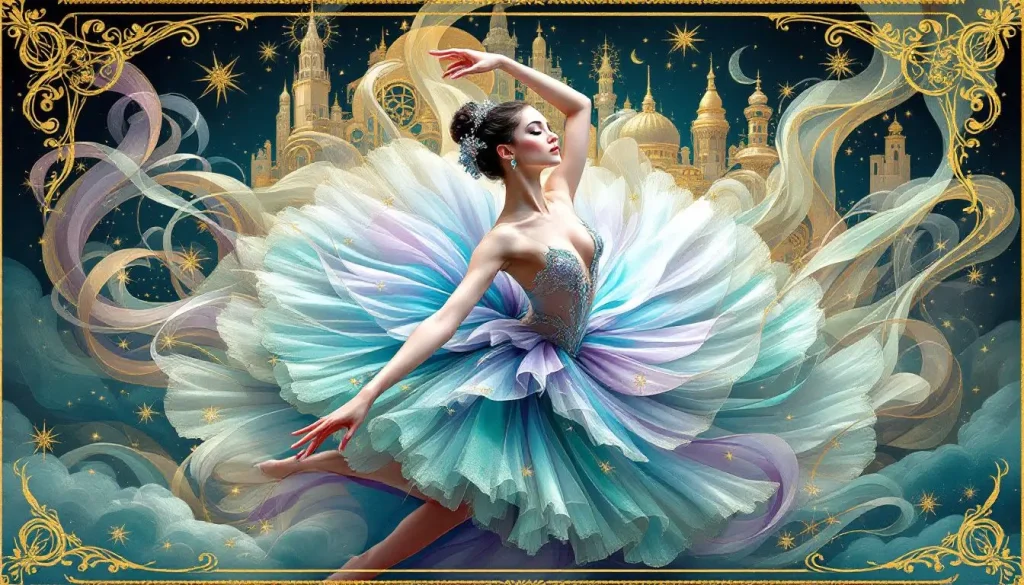
The Ballets Russes is best remembered for its revolutionary productions, which broke new ground in ballet. Le Sacre du Printemps, which premiered on May 29, 1913, at the Théâtre des Champs-Élysées, is a prime example. The May 29 choreography and music caused a chaotic reaction from dancers and the audience, with some describing the event as a ‘riot.’ With its complex rhythms and dissonance, this production challenged the conventional norms of ballet music and choreography.
Another significant production, ‘Les Sylphides,” choreographed by Michel Fokine, showcased a romantic style that departed from classical ballet’s rigid forms. It highlighted Fokine’s innovative approach, emphasizing the unity of dance, music, and decor, which became a defining feature of the Ballets Russes.
Collaborations with composers such as Igor Stravinsky and Maurice Ravel significantly shaped the modern ballet music genre. Stravinsky’s early scores for the Ballets Russes, including ‘The Firebird’ and ‘The Rite of Spring,’ introduced unconventional elements that have become staples in contemporary ballet. Similarly, Ravel’s composition for ‘Daphnis et Chloé’ combined innovative choreography with a lush musical score, showcasing the seamless integration of music and dance.
Ballets Russes’ productions were not just performances; they were spectacular exhibitions of storytelling, music, and design. This holistic approach elevated ballet to new artistic heights, making each production a unique and immersive experience.
Diaghilev’s Influence on Russian Ballet and Culture
Sergei Diaghilev’s influence on Russian ballet and culture is immeasurable. As the founder of the Ballets Russes, he revolutionized the art form and brought Russian culture to the forefront of the international stage. Diaghilev’s vision was to create a new kind of ballet that would push the boundaries of traditional ballet and incorporate elements of modern art and culture.
Diaghilev’s influence on Russian ballet is evident in the work of choreographers such as George Balanchine, who was profoundly influenced by Diaghilev’s innovative approach to ballet. Balanchine went on to found the New York City Ballet, which became a leading company in the modern ballet world.
Diaghilev’s influence on Russian culture extends beyond the world of ballet. He was a key figure in the development of Russian art, and his collaborations with artists such as Igor Stravinsky and Pablo Picasso significantly contributed to shaping the visual arts movement of the early 20th century.
The Ballets Russes’ productions often featured elaborate costumes, sets, and lighting designed by the company’s artists, including some famous designers. These productions helped establish Russian culture as a significant presence in the global performing arts world.
Diaghilev’s legacy is evident in the numerous ballet companies that his work has influenced. The Metropolitan Ballet Company, for example, was founded by a former dancer with Diaghilev and the Ballets Russes, and the company’s productions continue to reflect Diaghilev’s innovative approach to ballet.
The Victoria and Albert Museum in London boasts a substantial collection of artifacts related to the Ballets Russes, comprising costumes, sets, and programs. These artifacts provide a glimpse into the world of Diaghilev’s Ballets Russes, showcasing the company’s profound impact on Russian ballet and culture.
In conclusion, Sergei Diaghilev’s influence on Russian ballet and culture in the early twentieth century lasted. His innovative approach to ballet and his collaborations with artists from different disciplines helped shape the visual arts movement of the early 20th century and establish Russian culture as a major force in the world of performing arts.
Impact on Modern Ballet
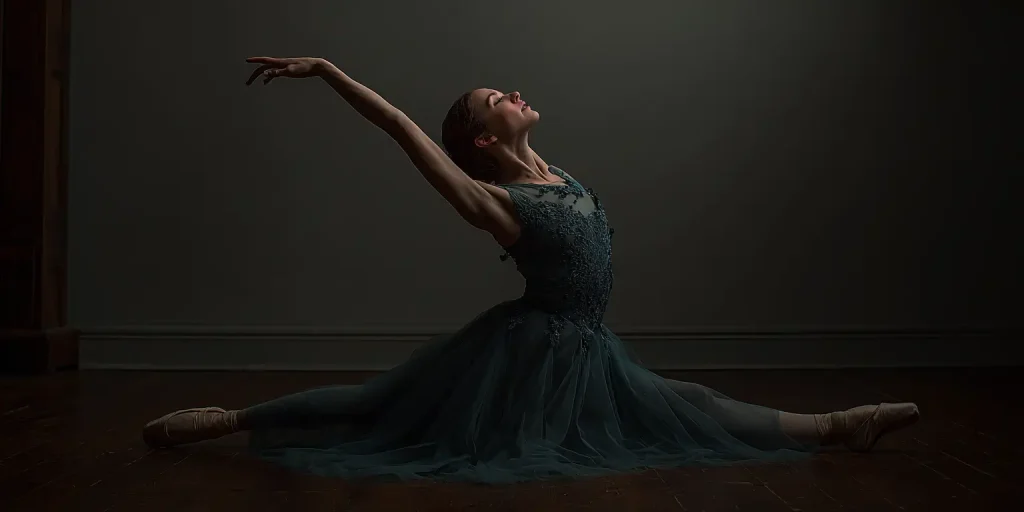
Diaghilev’s ballet Russeshadd had an immense impact on modern ballet. Michel Fokine’s innovative dance choreography, which emphasized the harmony between dance, music, and decor, had a significant influence on the artistic direction of ballet. This dance approach has helped vitalize the art form, making it more dynamic and expressive.
His efforts to revive interest in ballet across Europe and America played a crucial role in the art form’s resurgence. The Ballets Russes introduced audiences to new and exciting interpretations of ballet, which incorporated modern artistic elements and deviated from traditional forms.
The music composed for the Ballets Russes, particularly by Igor Stravinsky and Manuel de Falla, remains influential today. Over 200 interpretations of ‘The Rite of Spring’ have been choreographed, showcasing the enduring legacy of Diaghilev’s vision. The innovative scores and choreographies developed during this period inspire contemporary dance and ballet performances worldwide.
Legacy and Cultural Influence

Diaghilev’s legacy extends far beyond ballet. His collaborations with artists like Henri Matisse and Natalia Goncharova introduced modern art elements into ballet, altering audience perceptions of both disciplines. Integrating visual arts and ballet set a new standard for artistic collaboration and innovation.
His focus on Russian culture helped popularize traditional Russian themes in ballet, fostering a revival of interest in russian art and Russian artistic heritage. The Ballets Russes brought attention to the title role of the male dancer and highlighted the sensual aspects of russian ballet, reshaping its creative direction and broadening its appeal.
The influence of Diaghilev and the Ballets Russes extends to theater, fashion, and interior design. The aesthetic established by Diaghilev and his collaborators continues to inspire artists and designers, demonstrating the lasting impact of his visionary approach.
His work as artistic director and an impresario marked a shift in management style, blending artistic vision with operational leadership in the performing arts.
Key Figures in Diaghilev’s Circle

The success of the Ballets Russes was due not only to Diaghilev’s vision but also to the talented individuals and choreographers he brought into his circle. Michel Fokine, the principal choreographer, created over twenty significant works that laid the foundation for the company’s repertoire. Fokine’s innovative approach to choreography helped redefine ballet and set new standards for choreographers in future productions.
A key dancer, Tamara Karsavina, was celebrated for her exceptional technique and dramatic interpretations. Her performances in ballets like The Firebird and Petrouchka were instrumental in the success and innovation of the Ballets Russes. Her artistry and dedication made dancers around her heart of Diaghilev’s troupe.
Additionally, artists like Pablo Picasso and Léon Bakst played crucial roles in enhancing the visual and musical style of the Ballets Russes. Their contributions helped to create the unique and unforgettable productions that defined the company.
Diaghilev’s Final Years
Despite financial difficulties in his later years, Diaghilev’s passion for groundbreaking productions never waned. He continued to push the boundaries of ballet, striving to bring new and innovative works to the stage. However, his health began to deteriorate due to complications related to diabetes, which ultimately led to his passing.
Diaghilev passed away at the age of 57 in Venice, leaving a legacy that has influenced ballet and the arts for generations. He is buried on the island of San Michele, a fitting resting place for a man whose life was dedicated to artistic excellence.
His final years were marked by a complex interplay of creativity and challenges, but his contributions to the arts remain unparalleled. His vision and determination ensured that the Ballets Russes would be remembered as a transformative force in the history of ballet.
Resume
Sergei Diaghilev’s journey from his early life in the Russian Empire to becoming the mastermind behind the Ballets Russes is a testament to his visionary approach and dedication to the arts. His innovative productions, groundbreaking collaborations, and relentless pursuit of artistic excellence reshaped the ballet world and left an indelible mark on modern art.
The Ballets Russes introduced a new aesthetic that combined music, dance, and the visual arts, setting a new standard for artistic collaboration and performance. Diaghilev’s ability to bring together talented artists and composers created a unique and unforgettable experience for audiences, which continues to inspire and influence contemporary ballet.
Diaghilev’s legacy lives on through the continued appreciation and reinterpretation of the works he helped create. His influence is evident in the ongoing evolution of ballet and the broader world of the performing arts, ensuring that his contributions will be remembered and celebrated for generations to come.
Frequently Asked Questions
What ballet was produced by Diaghilev?
Diaghilev produced several significant ballets, including Cléopatre, Schéhérazade, L’Après-midi d’un Faune, Le Carnaval, and Le Spectre de la Rose. These works played a crucial role in the success of Diaghilev’s company, the Ballets Russes.
Who was Sergei Diaghilev?
Serge Diaghilev was a prominent Russian art critic, patron, and ballet impresario, renowned for founding the Ballets Russes, significantly transforming ballet in the early 20th century.
What was the Ballets Russes?
Diaghilev’s Ballets Russes, founded by Diaghilev in 1909, was a pioneering ballet company renowned for its groundbreaking productions that fused music, dance, and visual arts.
Who were some key collaborators with Diaghilev?
Some key collaborators with Diaghilev included renowned artists and composers such as Pablo Picasso, Léon Bakst, Igor Stravinsky, and Erik Satie. Their partnerships significantly contributed to the innovative productions of the Ballets Russes.
What are some famous productions by the Ballets Russes?
Famous productions by the Ballets Russes include ‘Le Sacre du Printemps,’ Les Lieds, The Firebird, and Apollon et Chloé. These works are celebrated for their innovative choreography and musical compositions.
What was “Mir iskusstva,” and why did it matter to Diaghilev’s later ballet career?
“Mir iskusstva” (“World of Art”) was the avant-garde magazine and artists’ circle Diaghilev co-founded in 1898. Acting as editor and exhibition organizer, he forged connections with painters, composers, and designers such as Léon Bakst and Alexandre Benois. The group’s emphasis on total artistic synthesis foreshadowed the cross-disciplinary collaborations that would define the Ballets Russes.
How did the 1905 Exhibition of Historic Russian Portraits change Diaghilev’s public standing?
Mounted at St. Petersburg’s Tauride Palace, the show gathered more than four thousand portraits from private collections, staged in theatrically decorated rooms. Its blockbuster success elevated Diaghilev from ambitious curator to internationally recognized impresario, convincing him that large-scale, immersive presentations could captivate modern audiences.
Why did Diaghilev start producing Russian opera and concerts in Paris before launching the Ballets Russes?
He saw Paris as the cultural capital most open to new ideas. Beginning in 1907, his “Russian Seasons” of opera and symphonic concerts showcased composers like Rimsky-Korsakov and Rachmaninoff, priming French audiences to embrace a Russian-led ballet troupe two years later.
How did Diaghilev discover Igor Stravinsky?
At a 1909 concert in St. Petersburg, he heard Stravinsky’s early orchestral piece “Fireworks.” Impressed by the young composer’s daring harmonies, Diaghilev invited him to orchestrate Chopin for Les Sylphides, then commissioned The Firebird (1910). Their partnership produced landmark scores that redefined twentieth-century music.
What role did Coco Chanel play in Ballets Russes productions?
Chanel was both patron and designer. She anonymously covered deficits—famously guaranteeing the 1920 revival of The Rite of Spring—and created minimalist, sports-inspired costumes for Le Train Bleu (1924). Her sleek aesthetic contrasted with earlier exotic opulence and pushed stage fashion toward modern chic.
How did Diaghilev integrate avant-garde painters into his ballets?
Rejecting traditional painted backdrops, he invited artists at the forefront of Cubism, Futurism, and Primitivism—Picasso for Parade, Natalia Goncharova for The Firebird revivals, Giorgio de Chirico for Le Bal. Sets and costumes became moving canvases, turning each performance into a living exhibition of contemporary art.
What management style earned Diaghilev both fear and loyalty?
He ruled rehearsals with a cane and a withering stare, demanding constant innovation. Contracts were short and discipline was strict, yet he nurtured individual artists, tailoring projects to their strengths and giving them unprecedented creative freedom. This intoxicating mix kept talent circling back despite the stress.
How did chronic financial instability shape the company’s touring pattern?
Lacking state subsidy, Diaghilev booked whirlwind tours—Paris in spring, Monte Carlo in winter, London summers—to chase box-office peaks and favorable currency rates. Repertoire choices often hinged on which patrons or cities promised advance funding, forcing rapid creative pivots but also fostering stylistic diversity.
Which future ballet leaders emerged from Diaghilev’s troupe?
George Balanchine carried Ballets Russes principles to the New York City Ballet; Ninette de Valois and Marie Rambert seeded British ballet; Serge Lifar revitalized the Paris Opéra Ballet. Their training under Diaghilev propagated his emphasis on musicality and designer-led staging, which became a significant influence worldwide.
In what ways did the Ballets Russes influence fashion and Art Deco design?
The riot of jewel-tone silks and Orientalist motifs in productions like Schéhérazade inspired couturiers Paul Poiret and Jeanne Paquin. At the same time, the geometric prints of Bakst and Goncharova had a direct influence on the Art Deco textiles, accessories, and interior decor of the 1920s.
What is meant by Diaghilev’s concept of “total theater”?
He believed music, dance, visual art, and costume should form a unified organism rather than separate departments. By assembling multidisciplinary teams in shared workshops, he treated each production as a gesamtkunstwerk—an all-encompassing artwork—decades before the term became theatrical shorthand.
How did the Ballets Russes challenge gender norms onstage?
Roles and costuming often blurred traditional lines: Nijinsky’s androgynous faun, female dancers in trousers for Le Train Bleu, and male corps members cast as exotic priestesses. These choices mirrored Diaghilev’s cosmopolitan circle and pushed audiences to reconsider masculinity and femininity in dance.
What happened to the repertoire after Diaghilev died in 1929?
The original company dissolved, but former associates quickly formed successor troupes—most notably the Ballet Russe de Monte Carlo—that revived favorites like Les Sylphides while commissioning new works. Copyright disputes persisted, yet the core ballets continued to be in active rotation across Europe and America.
Where is Diaghilev buried, and why do visitors leave ballet slippers there?
He rests in the Orthodox section of Venice’s island cemetery, San Michele, only yards from the later grave of Stravinsky. Dancers and admirers traditionally place signed pointe shoes or roses on his tomb as tokens of gratitude for his transformative impact on their art.
Are there any surviving films of Ballets Russes performances?
Diaghilev distrusted cameras, so complete recordings are scarce. The lone authentic footage is a brief 1928 newsreel excerpt of Les Sylphides shot in Montreux. Otherwise, the company’s stage magic lives on through designs, photographs, and reconstructed choreography.
How did patrons like Misia Sert and Coco Chanel keep the company afloat?
When box-office returns fell short, Diaghilev wired elite friends for emergency funds. Sert pawned jewelry to underwrite tours; Chanel’s anonymous 300-thousand-franc gift rescued the 1920 season. Their sponsorship let Diaghilev gamble on risky, groundbreaking premieres.
Why did the 1921 London production of The Sleeping Princess become notorious?
Staged with 300 opulent costumes, live canaries, and a full symphony, the extravaganza dazzled critics but bled money. London audiences balked at the four-hour running time, and the resulting debt nearly bankrupted Diaghilev—yet the lavish designs set a new benchmark for classical revivals.
What made Le Train Bleu a landmark in sports-inspired stagewear?
Choreographed in 1924, the ballet spoofed Riviera beach culture. Chanel dressed dancers in jerseys, tennis sweaters, and swim caps, introducing the idea that everyday athletic gear could be high style both onstage and off, a look that was echoed in fashion magazines within months.

